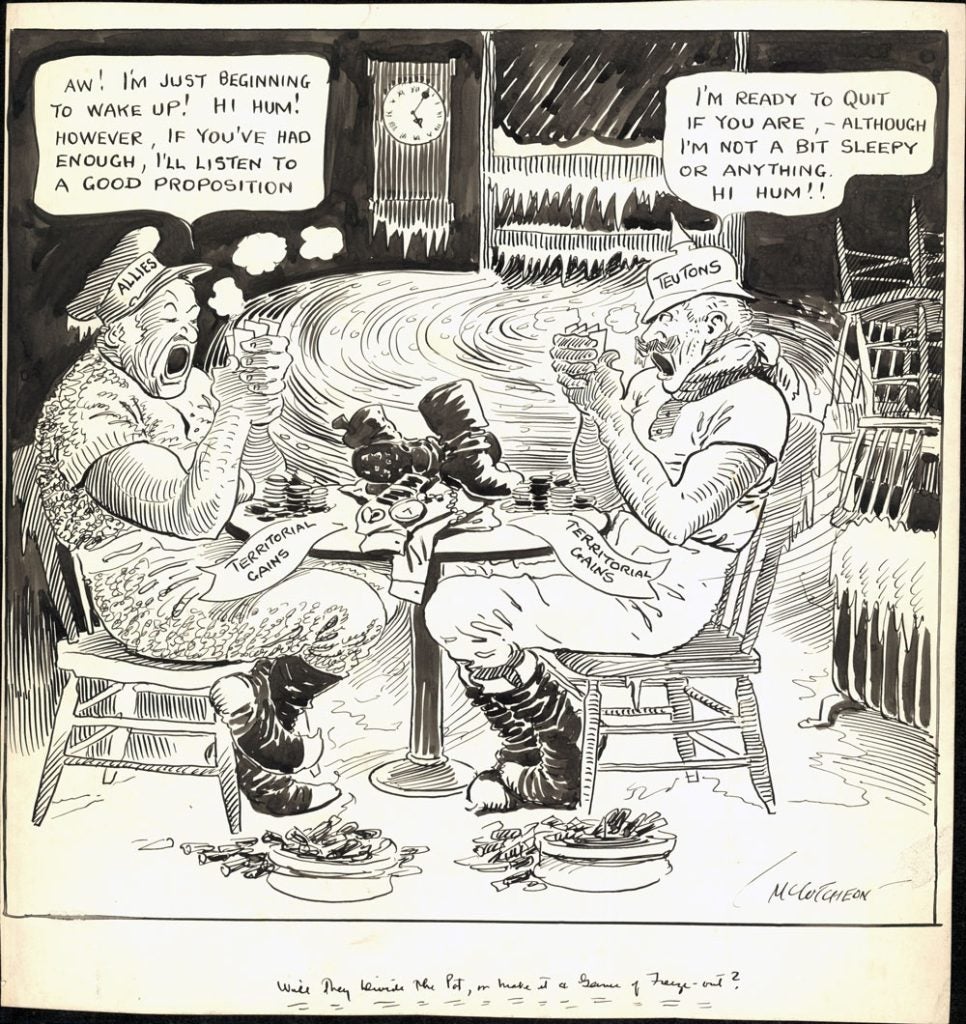
“Will They Divide the Pot?” (December 5, 1941)
by John Tinney McCutcheon (1870-1949)
14 x 14 in., ink on drawing board
Coppola Collection
https://en.wikipedia.org/wiki/John_T._McCutcheon
On the Purdue campus, where he was a student, McCutcheon (class of 1889) is memorialized in a coeducational dormitory, John T. McCutcheon Hall. The lobby displays an original of one of his drawings, a nearly life-size drawing of a young man.
After college, McCutcheon moved to Chicago, Illinois, where he worked at the Chicago Morning News (later: Chicago Record) and then at the Chicago Tribune from 1903 until his retirement in 1946. McCutcheon received the Pulitzer Prize for Cartoons in 1932.
In June 1941, WW2 took a sharp turn. There was war in Europe, in China, and in North Africa… and in 6 months, the US would be brought into it through the attack at Pearl Harbor. In June, though, Hitler turned on Russia and took the gambit that he could take Moscow in a well-structured, all out assault to the East.
Operation Barbarossa moved the German forces systematically forward, and within a few hundred miles of Moscow. Operation Typhoon was meant to take the prize and end the effort in victory. But the Russian roads were poor, and their rails were wider than the Germans, so the trains were stuck. Soon, the Germans were lacking food, ammo, and fuel, and soon, the proper clothing for the Russian winter, which they were not anticipating to face.
Operation Typhoon has been described as a stalemate of a boxing match, with lots of blows being landed but nothing gained beyond exhaustion and mutual damage. In early October, the wet season turned the battlefields into mud-pits that the Russians were better at negotiating.
The weather turned colder in November, improving the mobility of the Wehrmacht, who got within 12 miles of the Russian capitol by the end of the month.
Then the tide turned again. In early December, the temperature dropped to -40 (pick your scale, they converge here). Siberian-trained Russians, in fur-lined snow-white gear, tore through the Germans, pushing them back 150 miles. Hitler’s troops were ordered to not back down, and the seesaw occupation along the Eastern Front continued through the war.

